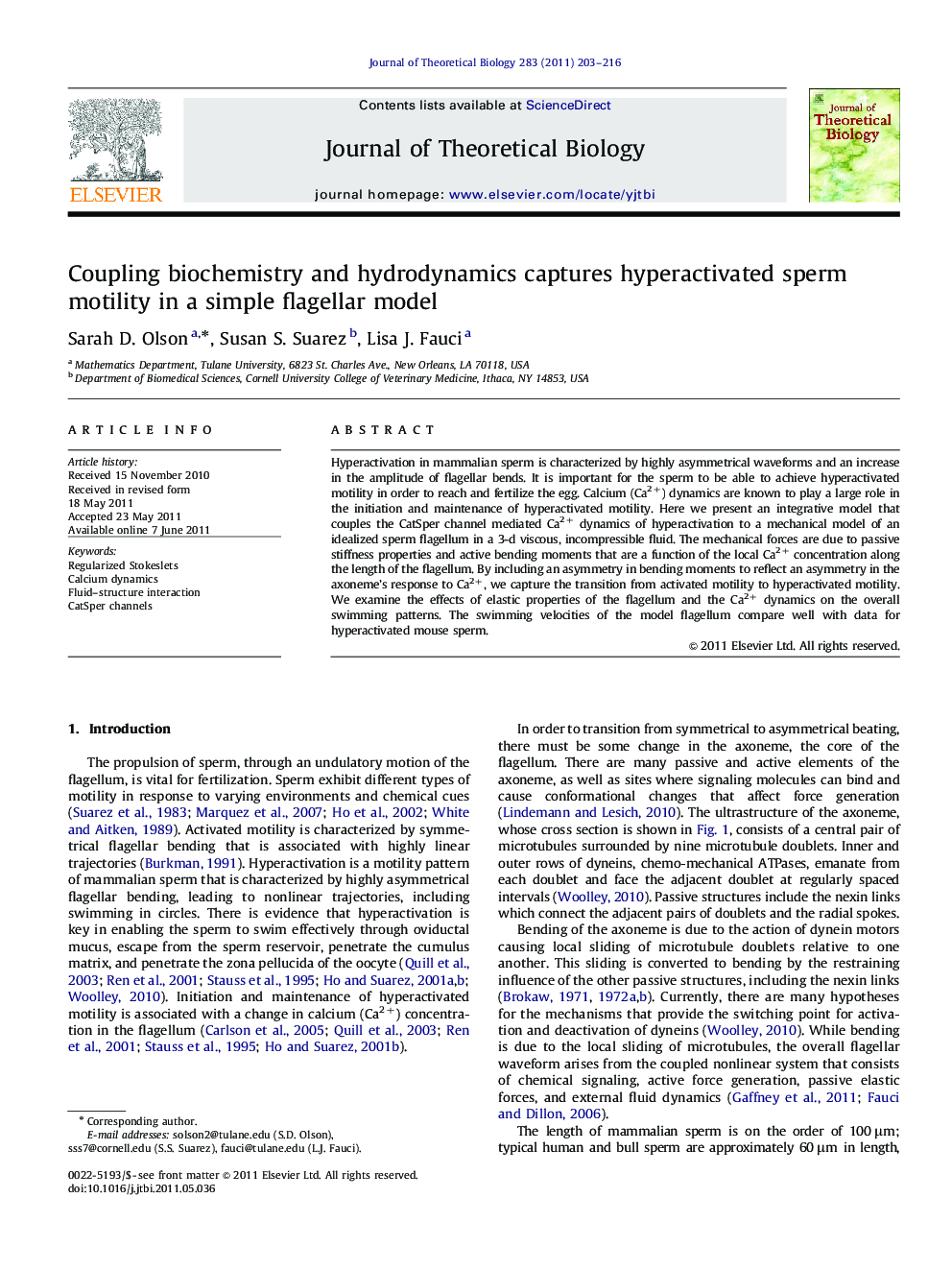| Article ID | Journal | Published Year | Pages | File Type |
|---|---|---|---|---|
| 4497058 | Journal of Theoretical Biology | 2011 | 14 Pages |
Hyperactivation in mammalian sperm is characterized by highly asymmetrical waveforms and an increase in the amplitude of flagellar bends. It is important for the sperm to be able to achieve hyperactivated motility in order to reach and fertilize the egg. Calcium (Ca2+) dynamics are known to play a large role in the initiation and maintenance of hyperactivated motility. Here we present an integrative model that couples the CatSper channel mediated Ca2+ dynamics of hyperactivation to a mechanical model of an idealized sperm flagellum in a 3-d viscous, incompressible fluid. The mechanical forces are due to passive stiffness properties and active bending moments that are a function of the local Ca2+ concentration along the length of the flagellum. By including an asymmetry in bending moments to reflect an asymmetry in the axoneme's response to Ca2+, we capture the transition from activated motility to hyperactivated motility. We examine the effects of elastic properties of the flagellum and the Ca2+ dynamics on the overall swimming patterns. The swimming velocities of the model flagellum compare well with data for hyperactivated mouse sperm.
► Calcium dynamics is coupled to a hydromechanical model of an elastic flagellum. ► The fluid–structure interaction is governed by the 3D Stokes equations. ► An asymmetry in calcium binding affinities results in hyperactivated waveforms. ► The model produces swimming trajectories that match experimental results.
